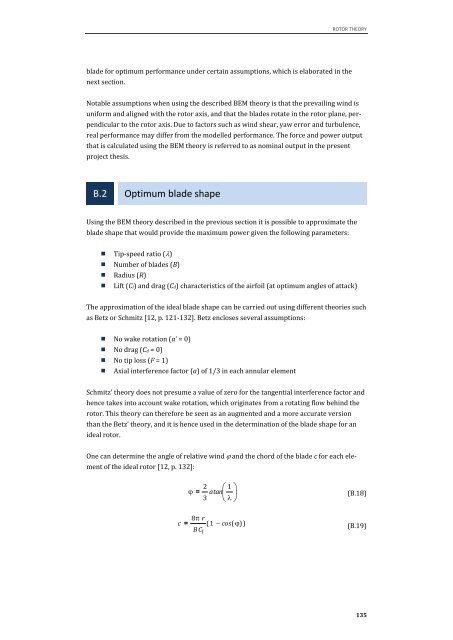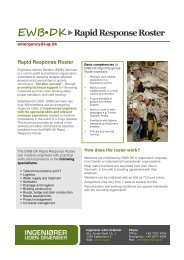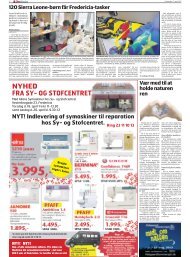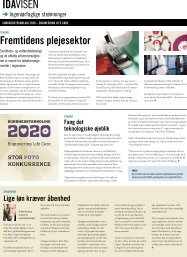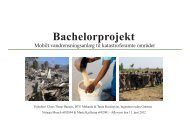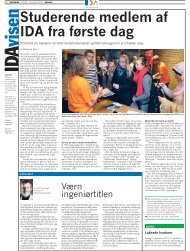Create successful ePaper yourself
Turn your PDF publications into a flip-book with our unique Google optimized e-Paper software.
ROTOR THEORY<br />
blade for optimum performance under certain assumptions, which is elaborated in the<br />
next section.<br />
Notable assumptions when u<strong>sin</strong>g the described BEM theory is that the prevailing wind is<br />
uniform and aligned with the rotor axis, and that the blades rotate in the rotor plane, per-<br />
pendicular to the rotor axis. Due to factors such as wind shear, yaw error and turbulence,<br />
real performance may differ from the modelled performance. The force and power output<br />
that is calculated u<strong>sin</strong>g the BEM theory is referred to as nominal output in the present<br />
project thesis.<br />
B.2 Optimum blade shape<br />
U<strong>sin</strong>g the BEM theory described in the previous section it is possible to approximate the<br />
blade shape that would provide the maximum power given the following parameters:<br />
� Tip-speed ratio (�)<br />
� Number of blades (B)<br />
� Radius (R)<br />
� Lift (Cl) and drag (Cd) characteristics of the airfoil (at optimum angles of attack)<br />
The approximation of the ideal blade shape can be carried out u<strong>sin</strong>g different theories such<br />
as Betz or Schmitz [12, p. 121-132]. Betz encloses several assumptions:<br />
� No wake rotation (a’ = 0)<br />
� No drag (Cd = 0)<br />
� No tip loss (F = 1)<br />
� Axial interference factor (a) of 1/3 in each annular element<br />
Schmitz’ theory does not presume a value of zero for the tangential interference factor and<br />
hence takes into account wake rotation, which originates from a rotating flow behind the<br />
rotor. This theory can therefore be seen as an augmented and a more accurate version<br />
than the Betz’ theory, and it is hence used in the determination of the blade shape for an<br />
ideal rotor.<br />
One can determine the angle of relative wind � and the chord of the blade c for each ele-<br />
ment of the ideal rotor [12, p. 132]:<br />
2 � 1 �<br />
� = atan� �<br />
3 � � �<br />
8� r<br />
c =<br />
( 1 � cos( �)<br />
)<br />
B Cl (B.18)<br />
(B.19)<br />
135


